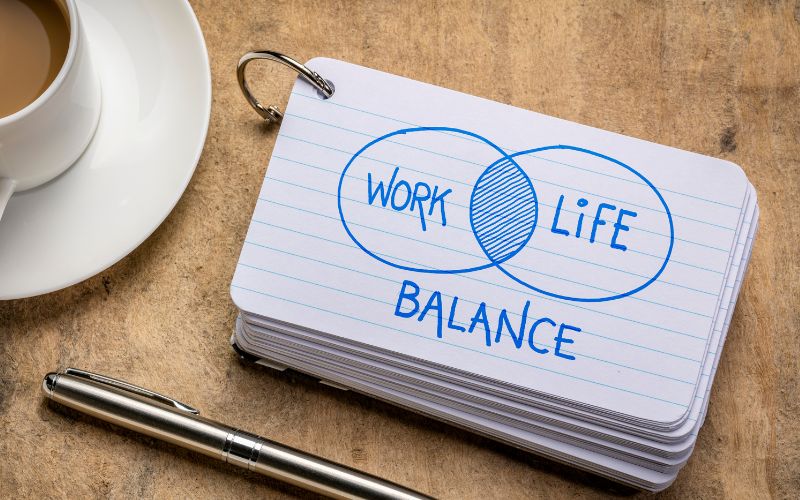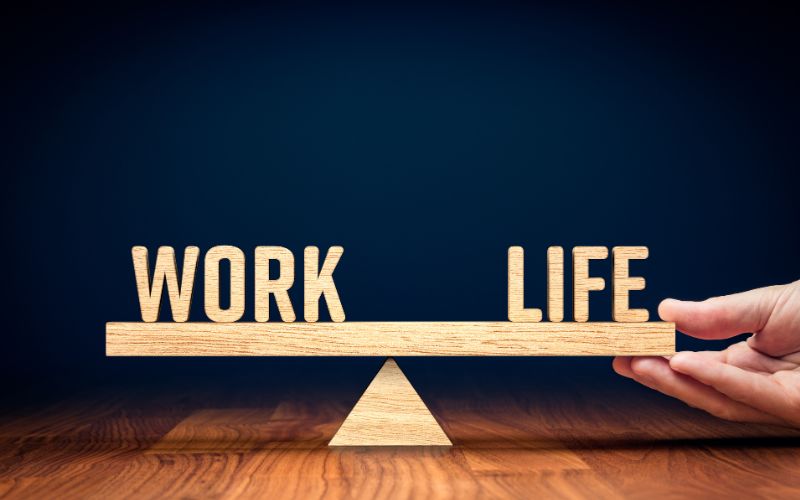
In today’s fast-paced world, finding a balance between work and personal life has become a challenge that many of us grapple with. The constant demands of our careers, coupled with personal responsibilities and aspirations, can easily tip the scales, leaving us feeling overwhelmed and disconnected. However, mastering the art of work-life balance is not an elusive goal. With the right strategies and mindset, you can create a fulfilling and harmonious life that encompasses both your professional ambitions and personal well-being.
Understanding the Work-Life Balance
Work-life balance is not about dividing your time equally between your job and personal pursuits. Instead, it’s about finding a dynamic equilibrium that allows you to excel in your career while also nurturing your personal relationships, hobbies, and overall well-being. It’s about recognizing that both aspects of your life are interconnected, and neglecting one can have a cascading effect on the other.
The Importance of Work-Life Balance
Maintaining a healthy work-life balance offers a multitude of benefits that contribute to your overall quality of life:
1. Reduced Stress: Juggling work and personal commitments can lead to stress and burnout. A balanced approach helps in managing stress levels and promoting mental well-being.
2. Enhanced Productivity: When you allocate time for work and rest, you become more focused and efficient during your work hours, leading to increased productivity.
3. Improved Relationships: Spending quality time with loved ones fosters stronger relationships, creating a support system that aids in managing life’s challenges.
4. Personal Growth: Pursuing hobbies and interests outside of work allows for personal development, new skills, and a sense of accomplishment beyond the professional sphere.
Strategies for Achieving Work-Life Balance
1. Set Clear Boundaries:
Establish boundaries between work and personal life. Define specific work hours and stick to them. Avoid checking emails or taking work calls during your designated personal time. This clear distinction helps prevent work from encroaching on your personal life.
2. Prioritize Tasks:
Utilize time management techniques like the Eisenhower Matrix to prioritize tasks based on their importance and urgency. This approach prevents you from getting bogged down by less significant tasks and allows you to focus on high-priority items.
3. Practice Self-Care:
Self-care is not a luxury; it’s a necessity. Make time for activities that recharge you – whether it’s exercise, meditation, reading, or spending time in nature. Taking care of your physical and mental well-being directly impacts your ability to manage both work and personal responsibilities.
4. Learn to Delegate:
At work and at home, recognize that you don’t have to do everything yourself. Delegate tasks that can be handled by others, whether it’s a colleague, a family member, or a service provider. Delegating empowers others and lightens your load.
5. Unplug Regularly:
In today’s digital age, constant connectivity can blur the lines between work and personal life. Schedule regular digital detoxes where you disconnect from devices and immerse yourself in offline activities.
6. Set Realistic Goals:
Having overly ambitious goals can lead to constant stress. Set realistic goals that are achievable within a reasonable timeframe. This approach prevents frustration and burnout while allowing you to make steady progress.
7. Learn to Say No:
It’s important to recognize your limits and be willing to decline additional responsibilities when your plate is already full. Politely but firmly saying no helps you avoid overextending yourself.
8. Foster Flexibility:
Life is unpredictable, and maintaining a rigid schedule can be counterproductive. Allow room for flexibility in your plans to accommodate unexpected events without derailing your entire routine.

Creating Lasting Change
Achieving work-life balance is an ongoing process that requires continuous effort and adjustment. Here’s how you can make these strategies a permanent part of your life:
- Mindful Reflection: Regularly assess your work-life balance to identify areas that need improvement. Reflect on what’s working and what’s not, and make necessary adjustments.
- Consistent Habits: Transform these strategies into habits. Consistency is key to making lasting changes in your routine and mindset.
- Open Communication: Discuss your work-life balance goals with your family, friends, and colleagues. Transparent communication can garner support and understanding from those around you.
- Regular Evaluation: Set aside time every few months to evaluate your progress. Celebrate your successes and adjust your strategies as needed to address any new challenges.
In Conclusion
The art of work-life balance is not an unattainable ideal; it’s a conscious and purposeful approach to living a fulfilling life. By setting boundaries, prioritizing tasks, practicing self-care, and fostering flexibility, you can create a harmonious existence that allows you to excel in your career while also nurturing your personal well-being. Remember, achieving work-life balance is a journey, and with patience, perseverance, and the right strategies, you can master this art and enjoy a truly fulfilling life.



